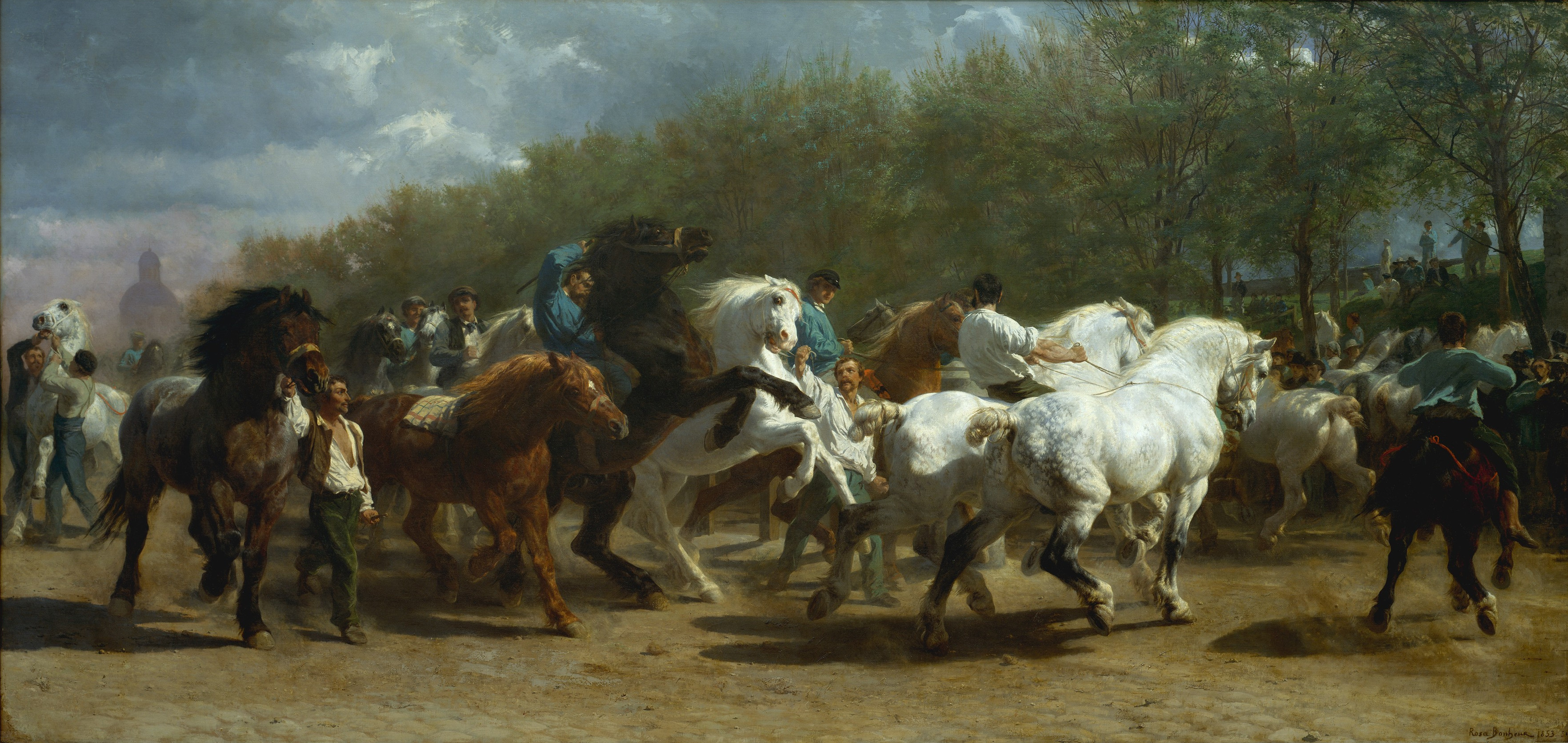Warhorse
| Type | Light | Medium | Heavy |
| Species | hoofed mammal | ||
| No. Appearing | 1 | 1 | 1 |
| Behaviour | domesticated | ||
| Range | rural, urban | ||
| Size at the withers |
14-16 hands | 15-17 hands | 16-18 hands |
| Weight | 1,000-1,300 lbs. | 1,300-1,700 lbs. | 1,700-2,000 lbs. |
| Intelligence | 2 | 2 | 2 |
| Armour Class | 7 | 7 | 7 |
| Hit Dice | 2+2 | 3+3 | 4+4 |
| Action Points | 6 | 6 | 5 |
| Max. Stride | 17 | 16 | 14 |
| THAC0 | 20 | 19 | 18 |
| Hp/Die | d4+d6 or d12 |
d12 | d12 or 2d6 |
| Attack Form | 3: two hooves; bite | ||
| Damage | hoof (1-6); bite (1-3) |
L hoof (1-6); R hoof (1-8); bite (1-3) |
hoof (1-8); bite (1-4) |
| Special Attack | back kick | ||
Warhorses are working animals bred to take part in war, bearing combatants and having characteristics that enable their use in cavalry tactics. Originally bred for chariots, many centuries of breeding has produced many hardy, strongly muscled varieties, raised in all parts of the world. When breeding such animals, the balance and agility of the horse is crucial.
Contents
Riders handle a horse through the bridle and stirrups, both of which are unavailable to primitive tribal regions; in fact, the horse itself requires a minimum of civilisation to exist. Warhorses are trained to respond fluidly to the rider's intentions, requiring limited use of the reins, relying upon the rider's thighs and voice for guidance. This frees the rider's hands more completely for fighting. In battle, the horse is largely unafraid, and is able to counterbalance the rider striking with weapons.
Additionally, these horses are accustomed to the use of barding and other tack, unlike a common horse that would bolt if subjected to such equipment. Carrying a rider laden with heavy armour is done without complaint.
The origins of the discipline of dressage comes from the need to train warhorses to be obedient and manoeuvrable. The horse was trained to rear at the moment of obtaining initiative, so that the rider could use the horse to strike with its front hooves in combat. Horses were also given free rein to bite, so that the rider and horse could act as combatants together.
Types
Light warhorses are favoured for speed, endurance and agility, which are best for raiding, moving through dense growth or scouting the location of the enemy. These horses tend to be long-legged, slim in build and more physically refined. They're also more "hot blooded" than larger horses, giving them an athletic versatility and ability to learn quickly. Their pedigree rises out of western Asia, where they were adapted to hot, dry climates. Desert warhorses are nearly always "light" warhorses. Well-known breeds are barb, Turkomen, Arabian and Andalusian.
Medium warhorses are stronger, capable of holding a third full-grown human rider if needed. They easily carry riders with scale mail or heavier armour. They are quite agile in combat, without possessing the raw speed and endurance of a lighter horse. Breeds became known as "destriers," the most prized; other breeds include "coursers" and "rounceys." Medium warhorses are also described as "chargers". They are usually stallions, with powerful hindquarters, a short back and well-muscled loin. Their legs are strong boned and they possess a well-arched neck.
Heavy warhorses, or "great horses," are used by the heaviest-armoured knights. They do well when carrying combatants in plate mail or plate armour. They're surprisingly agile for their size and are run close together when pressing the cavalry's weight in battle. The heavy warhorse's chest is wide and deep, with the croup long and level. The feet and legs are clean and heavily muscled. They're considered easy keepers and adapt well to most conditions and climates. Breeds include the Percheron and Boulonnais.
Sage Study & Abilities
Extensive knowledge about horses is available through horseback riding. This includes excellent skill in handling the warhorse, using it to engage in combat and the use of a bow from horseback. Warhorse training enables characters to raise young horses to be warhorses.
Back Kick
An experienced rider can wheel a horse around, away from his or her enemy, and cause it to back kick before heading off at stride-3 or better. This causes an attempt to hit with both hooves, each of which cause 1-8 damage when successful.
See Bestiary

